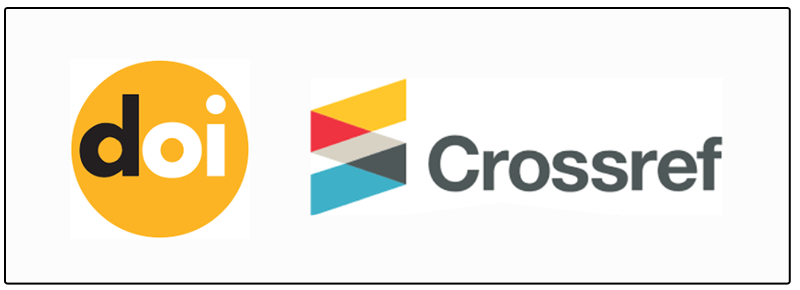PENGARUH PENAMBAHAN ABU SEKAM PADI DAN SERBUK BATA MERAH PADA CAMPURAN HOT ROLLED SHEET WEARING COURSE
THE EFFECT OF ADDING RICE HUSK ASH AND RED BRICK POWDER ON MIXED HOT ROLLED SHEET WEARING COURSE
Keywords:
Abu Sekam Padi, Serbuk Bata Merah, HRS-WC. , Rice husk ash, Red brick powderAbstract
Sekam padi di Indonesia masih belum termanfaatkan dengan baik. Diantara sekian kegunaan sekam padi, sebagian besarnya dipergunakan untuk keperluan tradisional seperti media tanam, perapian, abu gosok. Dalam upaya memanfaatkan nilai guna sekam padi, penelitian ini mencoba mengkombinasikan abu sekam padi dengan serbuk bata merah untuk di analisis pengaruh kinerja campuran tersebut sebagai bahan tambahan filler pada campuran Hot Rolled Sheet-Wearing Course (HRS-WC). Bahan penambah terdiri dari 3 komposisi, yakni; 75% abu sekam padi dan 25% serbuk bata merah (K1), 50% abu sekam padi dan 50% serbuk bata merah (K2), 25% abu sekam padi dan 75% serbuk bata merah (K3). Setiap komposisi terdiri dari 3 jenis kadar sebanyak 0,3%, 0,35% dan 0,4%. Hasil yang diperoleh dari semua proporsi campuran bahan tambah yang memenuhi spesifikasi untuk campuran Hot Rolled Sheet-Wearing Course (HRS-WC), disimpulkan bahwa nilai KAO terendah yaitu 6,25% pada K2 kadar 0,4% dengan stabilitas 1473 kg, VMA 17,8%, VIM 3,7%, VFB 78%, dan MQ 486,7 kg/mm. Sedangkan nilai stabilitas tertinggi yaitu 1688 kg pada K3 kadar 0,3% dengan nilai KAO 6,34%, VMA 18,2%, VIM 3,7%, VFB 79%, dan MQ 548,8 kg/mm.
Â
Rice husk in Indonesia is still not utilized properly. Among the many uses of rice husks, most of them are used for traditional purposes such as planting media, fireplaces, and ash. In an effort to take advantage of the use value of rice husks, this study tried to combine rice husk ash with red brick powder to analyze the effect of the performance of the mixture as a filler additive in Hot Rolled Sheet-Wearing Course (HRS-WC) mixture. The additive consists of 3 compositions, namely; 75% rice husk ash and 25% red brick powder (K1), 50% rice husk ash and 50% red brick powder (K2), 25% rice husk ash and 75% red brick powder (K3). Each composition consists of 3 types of content as much as 0.3%, 0.35% and 0.4%. The results obtained from all the proportions of added ingredients that meet the specifications for the Hot Rolled Sheet-Wearing Course (HRS-WC) mixture, it is concluded that the lowest KAO value is 6.25% at 0.4% K2 with stability of 1473 kg, VMA 17.8%, VIM 3.7%, VFB 78%, and MQ 486.7 kg/mm. While the highest stability value was 1688 kg at 0.3% K3 with KAO 6.34%, VMA 18.2%, VIM 3.7%, VFB 79%, and MQ 548.8 kg/mm.
References
Kementerian Pekerjaan Umum, 2018 Revisi 2. Spesifikasi Umum Divisi 6.
Muntohar, A. S. dan B. Hantoro, 2001. “Penggunaan Abu Sekam Sebagai Campuran Kapur Untuk Stabilisasi Tanahâ€. Tesis Magister. Bandung: Institut Teknologi Bandung.
Muntohar, Y., 2002. “Evaluasi Pengaruh Bahan Filler Fly Ash Terhadap Karakteristik Campuran Emulsi Bergradasi Rapat (CEBR)â€. Tesis Magister. Semarang: Universitas Diponegoro.
Rahaditya, D. R., 2012. “Studi Penggunaan Serbuk Bata Merah Sebagai Filler Pada Perkerasan Hot Rolled Sheet – Wearing Course (HRS – WC)â€. Skripsi. Jember: Jurusan Teknik Sipil, Fakultas Teknik, Universitas Jember.
Rianto, R. H., 2007. “Pengaruh Abu Sekam Sebagai Bahan Filler Terhadap Karakteristik Campuran Aspal Emulsi Bergradasi Rapat (CEBR)â€. Tesis Magister. Semarang: Universitas Diponegoro.
Sukirman, Silvia., 2003. “Beton Aspal Campuran Panasâ€. Nova, Bandung.
Wanadri, A., 1999. “Penerapan Spouted – Bed Dalam Pembuatan Natrium Silikat Dari Abu Sekam Padi: Hidrodinamika, Perpindahan Massa, dan Perolehan Silikatâ€. Tesis Magister. Bandung: Institut Teknologi Bandung.









